Icelandic Whale Watching Guide
Iceland is a dream destination for nature lovers and adventurers, offering stunning landscapes, vibrant culture, and unforgettable wildlife encounters. It’s also one of the world’s best locations for whale watching, where you can witness gentle giants like humpback whales, minke whales, and even orcas in their natural habitat.
Did you know that Iceland is home to some of the most ethical and eco-friendly whale watching tours in the world? Whether you’re cruising from Reykjavík or venturing to Húsavík—the whale capital of Iceland—there’s something magical about seeing these incredible creatures up close.
If you’re planning a trip to Iceland and want to include whale watching, there are a few key things you should know:
- What’s the best season to go whale watching in Iceland?
- What are the best whale watching tours in Iceland?
- How can you ensure you’re choosing an ethical and eco-friendly tour?
- How can you prepare for the trip to make it unforgettable?
We’ve got you covered with everything you need to plan a sustainable and awe-inspiring whale watching adventure in Iceland.
Enjoy eco-friendly Whale Tours in Iceland!

Whale Watching Tour in Reykjavik
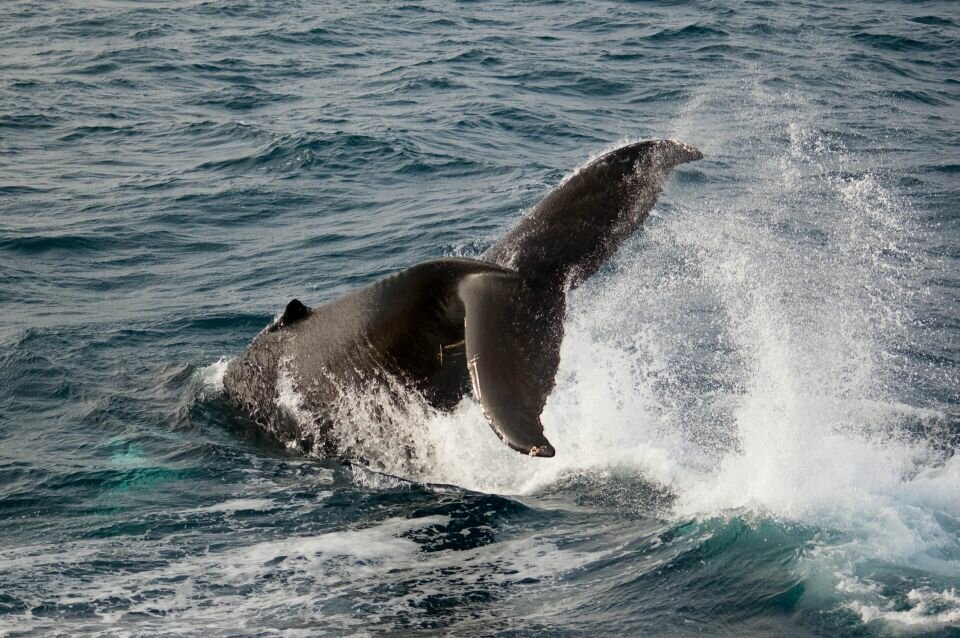
Step aboard the grand Andrea, the largest whale-watching ship in Iceland, as it embarks on a thrilling voyage from Reykjavik’s historic harbor.
Get ready to witness an incredible array of sea creatures, such as minke whales, white-beaked dolphins, harbor porpoises, majestic humpback whales, and even the occasional appearance of orcas, all with the assistance of an experienced guide.
Check AvailabilityAbout this activity
Highlights
- Sail from Reykjavik on Iceland’s largest whale-watching ship
- Guarantee: Receive a free ticket for another trip if no whales are sighted
- Stay warm with crew-provided overalls
- Enjoy the onboard café and souvenir shop
Includes
- Exciting whale watching trip
- Knowledgeable and experienced guide
- Stay warm with cozy overalls (even available in children’s sizes)
- Enjoy WiFi and heated indoor seating onboard
- Guarantee: Receive a complimentary ticket for a second trip if no whales are spotted
- Access the app in five different languages for an enhanced experience
Whale Watching in Husavik
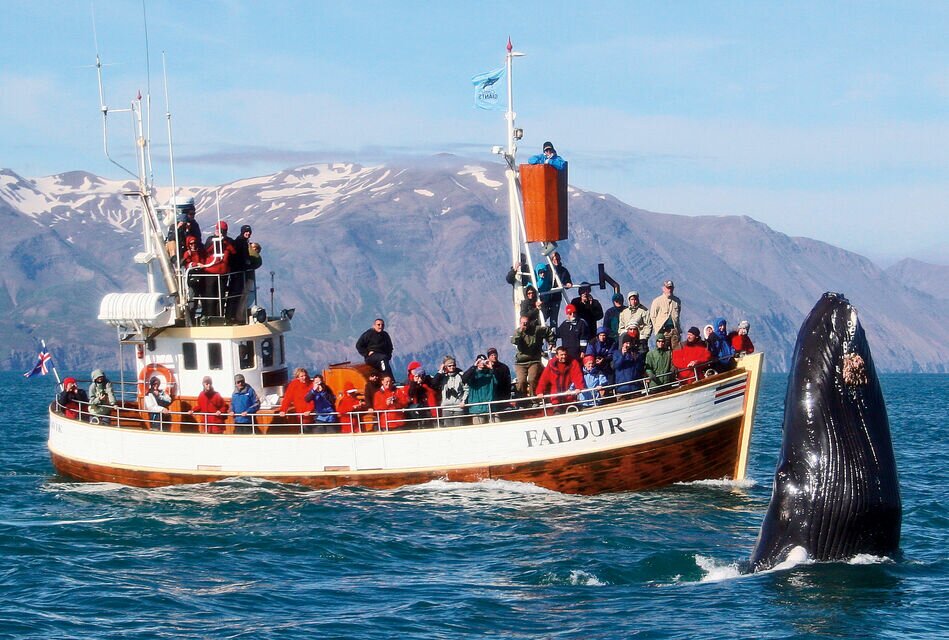
Get ready for an exciting adventure as you hop aboard a traditional Icelandic oak boat for a whale watching tour from Húsavík, known as Europe’s whale watching capital.
Once you set sail into Skjálfandi Bay, get ready to witness the incredible wonders of Mother Nature. Your guide will make sure you’re safe on the boat and then tell you all about the amazing sights you’ll see.
Check AvailabilityAbout this activity
Highlights
- Join us as we step aboard a classic Icelandic oak boat in Húsavík.
- Embark on an exciting 3-hour cruise around Skjálfandi Bay, searching for magnificent whales.
- Our experienced guides will share fascinating insights about Iceland’s nature and wildlife.
- Stay cozy and warm throughout the journey with overalls provided by our friendly crew.
Includes
- A thrilling whale watching cruise
- An expert guide with specialized knowledge
- Live commentary right on board the boat
- Stay warm and dry with cozy overalls and raincoats provided.
Whale Watching in Akureyri
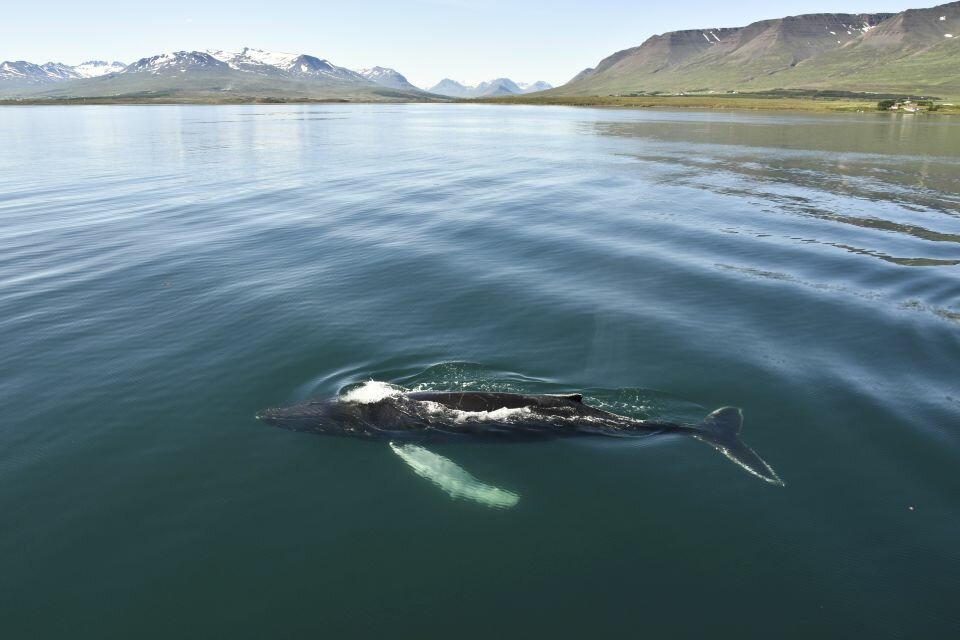
Get ready for an amazing cruise trip from Akureyri to see the majestic humpback whales and other marine creatures in the Eyjafjord.
Your guides are specially trained to spot these incredible creatures, and they’ll share interesting facts about the whales’ behavior.
This whale watching ship is unique in Iceland, designed to be fast and comfortable for up to 200 people.
Check AvailabilityAbout this activity
Highlights
- Cruise on a specially-modified, high-speed whale watching ship
- Experience the incredible humpback whales of Eyjafjord, departing from Akureyri
- Travel with the only environmentally-certified whale watching company in Iceland
- Contribute to the protection and preservation of Iceland’s magnificent wildlife and landscape
- Stay informed with the online whale diary, monitoring sightings and conditions in the area
Includes
- Boat tour
- Live guide
- Use of overalls onboard
- Wi-Fi
Best places to go whale watching in Iceland
While whale watching has almost a 100% success rate in Reykjavik between June and August, Akureyri’s proximity to the whale watching hotspot of Eyjafjord makes it a favorite among whale enthusiasts. Additionally, the deep waters and islands off Husavik are home to hundreds of whales and puffins throughout the year.
The success rate of whale watching tours will depend primarily on the season and the species of whale being observed.
In Iceland, whale watching tours are available in all three cities. Tourists can choose between classic, VIP, and combo tours to explore the waters and learn about whales in great detail. The ships and RIB boats are fully equipped with everything needed for a safe and comfortable ride. The tours I reviewed are members of the Icelandic Whale Watching Association (Ice Whale) and are dedicated to providing guests with a strong educational message about marine life conservation.
What types of whales and dolphins can you spot in Iceland?
Humpback Whales (Megaptera novaeangliae)
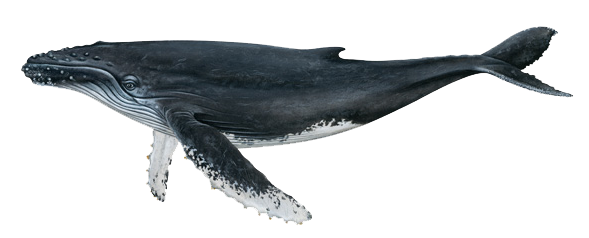
The most common summer inhabitant, humpback whales, are known for their acrobatics, which truly makes them the center of attraction. If you’ve booked a whale watching trip from northern Iceland, there’s a very good chance that you might see them in full action near the shore. In addition to their acrobatics, humpback whales are also known for their complex songs, which are sung by males during the breeding season.
These songs can last for up to 20 minutes and are thought to play a role in attracting females and establishing social hierarchies among males.
Minke Whales (Balaenoptera acutorostrata)

Minke whales are among the smallest members of the baleen species (with adults reaching lengths of up to 10 meters and weights of around 6-7 tonnes) and are renowned for their physical characteristics. They feature a unique white band on their pectoral fins and usually appear in groups of 2 or 3. They also have a pointed snout, which distinguishes them from other baleen whale species.
Orcas (Orcinus Orca)
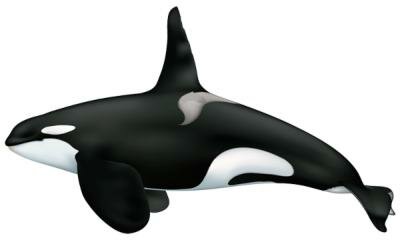
The killer whale, also known as the orca, is a species of toothed whale belonging to the family Delphinidae. There are several distinct populations of killer whales found throughout the world’s oceans, each with their own unique vocalizations and behaviors. The total global population of killer whales is estimated to be around 50,000 individuals.
Killer whales are known for their large size and striking black and white coloration. They are also famous for their intelligence, social behavior, and unique vocalizations, which include a variety of whistles, clicks, and calls.
White-Beaked Dolphins (Lagenorhynchus albirostris)

White-beaked dolphins are a species of oceanic dolphin that are commonly found in the North Atlantic Ocean. They are medium-sized dolphins, typically reaching lengths of 2.5 to 3.5 meters and weighing between 200 and 350 kilograms.
White-beaked dolphins are easily recognizable by their distinctive white beak, as well as their dark grey back and light grey sides and belly. They are known for their playful behavior and can often be seen leaping and porpoising out of the water.
In addition to their acrobatics, white-beaked dolphins are also social animals and are often found in groups, or pods, of up to several hundred individuals. These pods can include individuals of all ages, and are known to engage in activities such as feeding, mating, and socializing
Harbor Porpoises (Phocoena phocoena)

Despite being relatively common in some areas, harbor porpoises are notoriously shy and difficult to spot. They are often seen alone or in small groups of two or three individuals, and tend to avoid boats and other human activity.
One interesting behavior exhibited by harbor porpoises is called “roostertailing,” which is the term used to describe when they swim at high speeds just beneath the surface of the water, creating a visible wake or “rooster tail.” This behavior is believed to be related to feeding, as harbor porpoises primarily consume small fish and squid.
Harbor porpoises are known for their distinctive triangular dorsal fin and dark grey body coloration. They are also capable of diving to depths of up to 200 meters in search of prey.
Blue Whales And Fin Whales (Balaenoptera musculus & physalus)

Although blue whales are a common sight in Iceland during summers, their population is declining at a faster rate. Besides, they appear in small groups or as individuals near the shore, with active feeding patterns in cold waters.
In Iceland, fin whales are more commonly seen in the remote waters of the north, and may require a specialized boat like a RIB (rigid inflatable boat) to reach their preferred habitats. They are known for their sleek, streamlined body shape and distinctive V-shaped head, and are also primarily krill feeders.
Both blue whales and fin whales are protected under international law, and Iceland has imposed quotas on the hunting of these species in recent years in an effort to promote conservation. However, some conservation organizations still consider these quotas to be unsustainable, and the future of these majestic animals remains uncertain.
Belugas (Delphinapterus leucas)
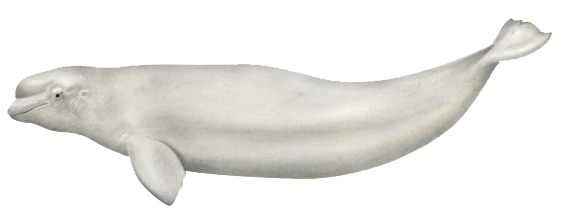
Beluga whales are known for their highly social nature and complex vocalizations, which include whistles, clicks, and other sounds. They have a unique ability to move their head independently from their body, which allows them to “emote” various expressions and communicate with each other in a variety of ways.
In Iceland, beluga whales can be found in two main locations. The first is the Beluga Sanctuary, located off the south coast of the country near the town of Vestmannaeyjar. This sanctuary was established in 2019 as a joint effort between the Icelandic government and conservation organizations, and currently houses two beluga whales that were previously held in captivity in China.
The second location where beluga whales can be found in Iceland is in the wild on the north coast. Beluga whales are occasional visitors to Icelandic waters, and are believed to be part of a larger population that ranges from the eastern Arctic to the Bering Sea.
Narwhal (Monodon monoceros)
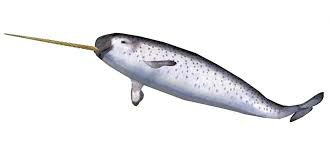
Termed “the unicorn of the sea,” the male narwhals are famous for their elongated tusks protruding from a canine tooth. In Iceland, narwhals are a rare and elusive sight.
They are primarily found in the remote northern waters of the country, and are often difficult to spot due to their preference for deep, offshore habitats. However, some lucky whale-watchers have been able to catch a glimpse of these fascinating animals as they swim and feed in the cold Arctic waters.
Beaked Whales (Ziphiidae)

Beaked whales are a relatively common sight in Iceland, particularly in the southeast region of the country. There are believed to be around 40,000 individuals of several different species in this area, making it an important habitat for these little-known whales.
Despite their abundance in some areas, beaked whales remain one of the least studied and understood groups of whales. They are known for their deep-diving behavior, with some species capable of diving to depths of over 2,000 meters in search of squid and other deep-sea prey.
Long-Finned Pilot Whales (Globicephala melas)
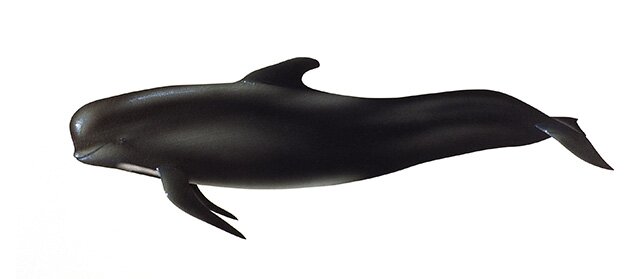
Pilot whales are highly social animals and are typically found in groups, or “pods,” that can number in the hundreds. These pods are often composed of both males and females, and may include several generations of whales.
One unique aspect of pilot whale behavior is their close social bonds, which are thought to be some of the strongest of any animal species. Members of a pod are known to engage in cooperative behavior, such as helping each other to hunt for food or care for young calves.
Despite their large population size, pilot whales are relatively elusive and are not often seen near the shores of Iceland or other parts of their range. They prefer to live in deep offshore waters, where they feed primarily on squid and other deep-sea prey.
How much does an Icelandic whale watching tour cost?
The cost of a whale watching tour in Iceland can range from €77 to €150 (or $80 to $157) per person depending on the location and type of tour. Whale watching tours from Reykjavik range from €78 to €122 (or $81 to $130) per person, while those from Akureyri and Husavik range from €86 to €150 (or $91 to $157) and €77 to €141 (or $80 to $150) per person, respectively.
The price may vary depending on the duration of the tour and the type of vessel used.
What is the best season for whale watching in Iceland?
The best time to go whale watching in Iceland is from April to early October, with June to August being the peak season. During the summer months, warm weather and calm waters make it easier to spot whales and enjoy close-up experiences on smaller boats.
In winter, despite the cold weather and rough waters, tourists can still see a variety of whale species in popular spots, such as orcas and humpbacks in the Breidafjordur Fjord and sea belugas in Northern Iceland. The Northern Lights are also a highlight of winter whale watching tours.
What is the best time of day to go whale watching in Iceland?
The best time to see whales in Iceland is early in the morning or late in the afternoon. During these times, the sun is lower in the sky, which creates better lighting conditions for spotting whales. The sea is also usually calmer in the morning and late afternoon, which makes it easier to see the whales.
What weather is best for whale watching in Iceland?
Since the Icelandic winters can get extremely cold, most people plan their whale watching trips in the summer, when the average temperature varies between 50 and 59-degree Fahrenheit. And it can get as warm as 77-degree Fahrenheit. In tandem with the clear skies and relatively calm water, your whale watching experience can be both comfortable and successful.
However, I still suggest carrying warm clothes as the temperature can come down to 40-degree Fahrenheit at times. Besides, the country is almost always windy, and the cold may intensify as your boat speeds through the water.
How big are the chances you will see whales and dolphins on your tour in Iceland?
It’s difficult to give an exact percentage for the chances of seeing whales and dolphins on a tour in Iceland, as it can vary depending on many different factors. However, many reputable whale watching tour companies in Iceland report a success rate of between 85-95% for spotting whales and dolphins during the peak season (May to September).
It’s important to keep in mind that these figures are not a guarantee and the sightings can never be 100% guaranteed due to the unpredictability of wildlife and weather conditions. Nonetheless, Iceland’s rich marine life, relatively calm seas and experienced operators increase the chances of spotting whales and dolphins in their natural habitat.
Are whale watching tours in Iceland suitable for kids?
Yes, whale watching tours in Iceland can be suitable for children, depending on their age and interests. Many children find the experience of seeing whales and dolphins in the wild to be very exciting and educational.
However, it’s important to note that whale watching tours can involve a fair amount of time spent on a boat, and some children may become seasick or uncomfortable. It’s a good idea to consider the age and temperament of your child, as well as the length and conditions of the tour, before booking.
Most whale watching tour companies in Iceland provide life jackets and safety equipment for all passengers, including children, and many also offer binoculars and other equipment to enhance the viewing experience. Some tours also have onboard naturalists or guides who can provide information and answer questions about the marine life.
It’s always a good idea to check with the tour company beforehand to see if they have any specific age or weight restrictions, as well as any other recommendations for children on the tour. Additionally, it’s important to remind children to be respectful of the animals and their natural environment, and to follow any guidelines provided by the crew to ensure the safety and well-being of all passengers and wildlife.
What to wear when going on a whale watching tour in Iceland?
When going on a whale watching tour in Iceland, it’s important to dress appropriately to stay warm and comfortable during your time at sea. Here are some tips on what to wear:
- Layers: Dress in layers, so you can adjust your clothing as the temperature changes. Start with a base layer of thermal underwear or a long-sleeved shirt and pants made of moisture-wicking material, which will help keep you dry. Add a fleece or wool sweater over your base layer for insulation, and top it off with a waterproof and windproof jacket.
- Warm hat: A warm hat or beanie can help keep your head and ears warm, especially if it’s windy. Look for a hat that covers your ears and is made of a warm, moisture-wicking material like wool or synthetic fleece.
- Gloves: Bring a pair of waterproof gloves or mittens to keep your hands warm and dry. If you plan to take photos, consider gloves with removable fingertips, so you can use your camera without having to remove your gloves entirely.
- Scarf or neck gaiter: A scarf or neck gaiter can provide extra warmth for your neck and face. Look for one made of a warm, moisture-wicking material like wool or synthetic fleece.
- Waterproof and non-slip shoes: Wear waterproof and non-slip shoes, as the deck of the boat may be wet and slippery. Rubber boots or hiking boots are good options, as they provide good traction and can be worn with warm socks for added insulation.
- Sunglasses: Bring a pair of polarized sunglasses to reduce glare from the water and protect your eyes from the sun.
- Sunscreen: Even if it’s cloudy, you should still wear sunscreen to protect your skin from the sun’s harmful UV rays.
It’s also a good idea to check the weather forecast before your whale watching tour and dress accordingly. Remember, it’s better to dress too warmly than not warmly enough, as you can always remove layers if you get too hot.
How to avoid seasickness during a whale watching tour?
Getting seasick is a common concern for many people who plan to go on a whale watching tour. Here are some tips to help prevent or alleviate seasickness:
- Choose a larger, more stable boat
- Opt for a larger, more stable boat for the whale watching tour. These boats are less likely to be affected by the waves and provide a smoother ride. Additionally, sit towards the middle of the boat, where there is less motion.
- Take medication
- If you know that you are prone to seasickness, you may want to take medication before the tour. Some over-the-counter options include antihistamines like Dramamine, while prescription options include Scopolamine patches. Consult with your doctor or pharmacist for advice on the best option for you.
- Eat light, non-greasy food
- Avoid eating heavy, greasy food before the tour. Instead, eat a light meal or snack, and avoid alcohol and caffeine, which can worsen seasickness.
- Look towards the horizon
- When you are on the boat, focus on the horizon. This can help your body adjust to the motion of the boat.
- Get fresh air
- Being in a stuffy, enclosed space can worsen seasickness. Instead, try to stay outside and get fresh air whenever possible.
- Stay hydrated
- Drink plenty of water to stay hydrated, but avoid carbonated or sugary drinks, which can worsen nausea.
- Try acupressure bands
- Some people find that acupressure bands, which apply pressure to specific points on the wrist, can help alleviate seasickness.
By taking these steps, you can increase your chances of having an enjoyable and comfortable whale watching tour in Iceland.
Can you spot whales and dolphins from the shoreline in Iceland?
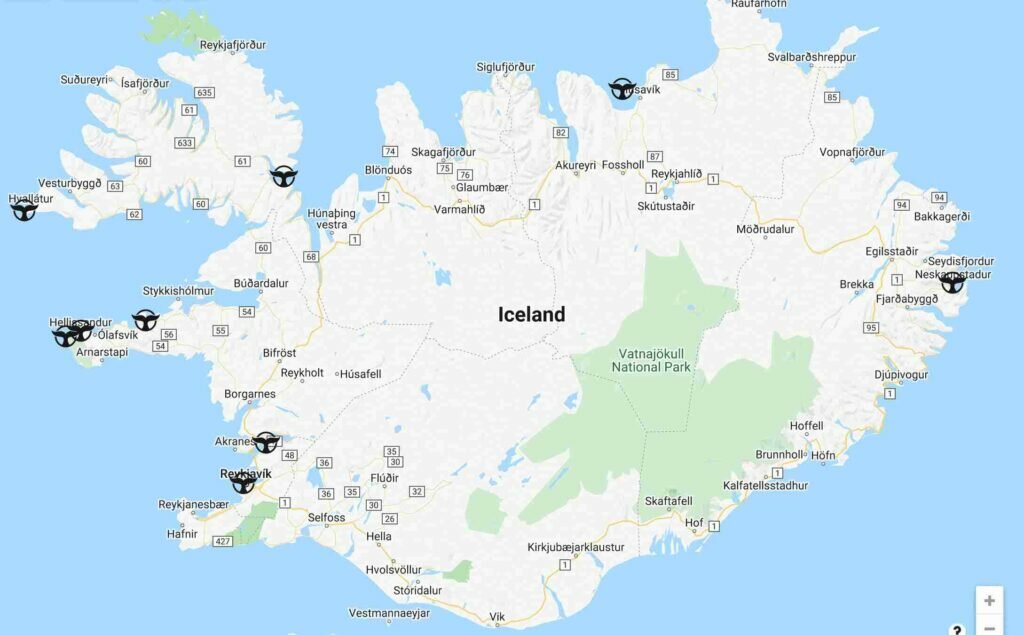
Yes, you can spot whales and dolphins from the shoreline in Iceland. I understand that not all visitors may be comfortable with a boat journey, no matter how calm the water is. But the fear and anxiety of sailing shouldn’t be a roadblock for your whale or dolphin watching trip.
So, here are a few places that you may visit to catch a glimpse of these gigantic mammals from the land.
- Reykjavik
- Believe it or not but it’s possible to spot both whales and dolphins from land in the capital city. And the best place to do so is the Eiðisgrandi beach, situated on the western coast of Reykjavik. This is because there are binoculars specifically installed for whale and dolphin watching, so don’t bother carrying one. However, don’t run low on time and patience!
- Snaefellsnes Peninsula
- Aside from orcas, the northern part of the Snaefellsnes is frequently visited by porpoises and dolphins. The summer months will give you a better chance of seeing them from the shore, as they tend to follow the other species who make their way to the nearby regions. In this regard, many people have been particularly successful in spotting different species of whales and dolphins from the towns situated on the coast. You can also visit the Ondverdarnes on the western tip of the peninsula to try and spot whales from the land.
- Kolgrafafjordur
- Another location that allows you to watch orcas and dolphins from a safe distance is Kolgrafafjordur (situated east of Kolgrafafjordur). I suggest heading directly to the bridge to increase your chances of success.
- Hellissandur
- In the past few years, there have been many instances of pilot whales coming up to the Hellissandur harbor during the summer months. According to reports from tourists and bystanders, a large number of pilot whales got too close to the harbor, and rescuers had to jump into action to safely push them back into the water. Similar cases have also cropped up in Rif, a town located not very far from Hellissandur. Although experts haven’t been able to understand the exact reason for this, the general perception is that the whales may have followed a “leader whale,” who might have, in turn, lost its way.
- Steingrimsfjordur Fjord
- The Steingrimsfjordur Fjord is your best bet if you want to spot minke whales, provided that the water remains calm. Locals have also reported spotting the world’s largest mammals, aka blue whales here, although a very long time back.
- Latrabjarg Cliff
- In case you aren’t familiar with the geography of the country, then let us introduce you to the Latrabjarg cliff. It’s the largest sea cliff located on the western tip of Iceland, which is almost 8.8 miles wide and about 440 meters high. Despite being regarded as a “bird cliff,” tourists may be able to sight whales and dolphins by laying flat on the ground such that their hands hang from the edge. However, be extremely careful while doing so.
- Hvalfjordur
- The name Hvalfjordur translates to “whale fjord,” so you can keep your hopes high while visiting this part of the country. Besides, you don’t have to stop at any dedicated whale watching spot per se, as you can spot whales and dolphins by simply rolling down the windows of the car.
- Skjalfandi Bay
- Although Skjalfandi Bay hosts some of the best on-water whale watching trips in the country, there are some spots towards the north of the region where you can spot whales and dolphins from the land. However, make sure that you have some time in hand as you may have to travel from one location to another to get the best view.
- Neskaupstadur
- You can plan a trip to the small town of Neskaupstadur situated in Nordurfjordur (in Westfjords) during the summer for satisfying whale and dolphin watching from the shore.
What is the Code of Conduct for eco-friendly whale watching in Iceland?
Over the years, whale watching has emerged as one of the most popular tourist activities that Iceland has to offer. Serving the dual purpose of boosting the economy and promoting awareness about these mammals. But at the same time, it’s essential for both the tour operator and visitors to ensure the safety of whales and dolphins, as well as nature in general.
Hence, I urge the guests to always opt for eco-friendly and ethical tours that follow the required guidelines of the non-governmental Icelandic Whale Watching Association (Ice Whale) aimed at protecting these inhabitants of the water and their natural habitat.
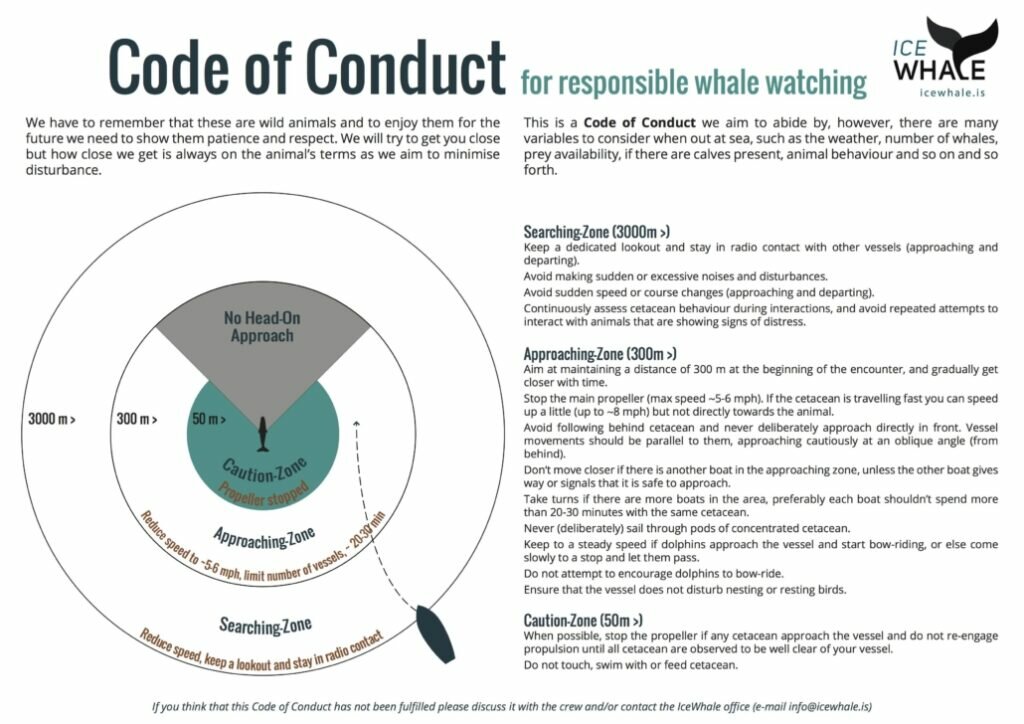
The aim of the CoC is as follows:
- Minimising impact on cetacean for the future and the sustainability of whale watching operation in Iceland.
- Ensuring the best possible encounter, both for animal welfare and passenger enjoyment.
- Increasing development, understanding and awareness of appropriate practices when watching cetaceans.
Another very important thing to check is that the tour operator should have the required licenses and registration for operating on the water among the whales. If they don’t provide you with these details, then look for another operator.
Is it possible to snorkel with whales and dolphins in Iceland?
Yes – It is possible to snorkel and swim with whales and dolphins in iceland! Imagine this: every year, Humpback Whales take a trip from the warm Caribbean to Iceland for a big dinner. They’ve been hanging out in the warm waters, having fun, making baby whales, and then they travel to Iceland from around May to November.
During these months, these huge and amazing creatures come to visit the fjords (that’s like a fancy word for a narrow sea between big mountains) and sometimes they come really close to the shore. You might even spot them while you’re relaxing in a hot tub or swimming in the water.
And guess what? It’s not just Humpback Whales who come to the party. There are also Minke Whales and lots of different types of Dolphins having a blast in the fjord during the summer. Since we’re so lucky to have all these incredible animals around, the people here thought, “Why not let others experience this too?”
So, Srytan Iceland came up with something called “whale snorkeling.” They’ve put a lot of effort into making it a super cool adventure, and they really care about making sure the animals are happy and safe.
Best photography & video tips for whale watching
Not everybody is a pro photographer. And guess what? You don’t need to be one to click amazing pictures as long as you follow these simple tips!
- Use A Tripod
- If possible, carry a tripod on-board so that you don’t have to worry about keeping your hands steady. Additionally, use image stabilization modes, such as anti-shake to click clear images even in low light.
- Don’t Use The Flash
- The harsh flash of your camera may disturb the whales and make them retreat, so it’s always advisable to turn off the flash while clicking pictures.
- Use The Burst Mode
- The burst mode on your phone or camera allows clicking multiple pictures in quick succession, meaning you don’t have to wait for the device to wake up between clicks. If you aren’t using the video mode, then I strongly recommend using the burst mode, especially to capture the movements of the whales and dolphins.
- Back Up The Images
- Always ensure that your cloud or physical storage has enough space to back up all the images and videos. Store everything (no matter how “bad” the clicks are), as you can easily remove them after the trip. After all, you wouldn’t want to spend your time on-board deleting images!
- Use a polarizing filter
- A polarizing filter can help reduce the glare and reflection from the water surface and give you more vivid colors and contrast in your photos.
- Adjust your shutter speed
- Depending on the light and the speed of the whales, you may need to adjust your shutter speed to freeze or blur the motion. For example, to capture a breach or a tail slap, you may need a fast shutter speed of 1/1000 or faster. On the other hand, to show the motion and direction of a swimming whale, you may want to use a slower shutter speed of 1/125 or slower.
- Frame the shot creatively
- While it’s tempting to zoom in and focus on the whale’s head or fluke, try to vary your composition and include other elements such as the ocean, the horizon, the boat, or other wildlife. This can give your photos more context and interest.
- Be patient and observant
- Whale watching can be unpredictable, and sometimes you may have to wait for hours or days to see the action. Use this time to observe the behavior of the whales, learn their patterns, and anticipate their next move. This can help you capture more unique and dramatic shots.
History and impact of commercial whaling on the whale population of Iceland
Whaling has been a controversial issue in Iceland for decades. The country has a long history of commercial whaling, with records of whale hunting dating back to the 12th century. However, in recent years, the practice has faced criticism from animal welfare advocates, environmentalists, and many others.
In this article, we’ll explore the history and impact of commercial whaling on the whale population of Iceland, using available statistics and research to provide a comprehensive overview of the issue.
History of whaling in Iceland
As mentioned, Iceland has a long history of whaling. The first recorded instance of whaling in the country dates back to the 12th century, when Norse settlers began hunting for food and oil. Over time, whaling became an important part of the Icelandic economy, with commercial whaling beginning in the late 19th century.
Throughout the 20th century, Iceland continued to hunt whales for their meat, oil, and other products. In the 1980s, the country became a member of the International Whaling Commission (IWC), an intergovernmental organization tasked with the conservation of whale populations and the management of whaling.
However, in 1986, the IWC implemented a moratorium on commercial whaling, effectively banning the practice in most countries. Iceland initially agreed to the ban, but in 2002, the country resumed commercial whaling under objections from the international community.
Current status of whaling in Iceland
Today, Iceland is one of the few countries in the world that continues to hunt whales for commercial purposes. The country currently has two main whaling companies: Hvalur hf and IP-Utgerd Ltd.
Hvalur hf is the larger of the two companies and is responsible for hunting fin whales, the second-largest animal on the planet after the blue whale. IP-Utgerd Ltd hunts minke whales, a smaller species that is more common in Icelandic waters.
According to data from the Icelandic Ministry of Fisheries and Agriculture, a total of 1,628 whales were caught by Icelandic whaling companies between 2006 and 2020. Of these, 1,282 were minke whales, and 346 were fin whales.
Impact of whaling on the whale population of Iceland
The impact of commercial whaling on the whale population of Iceland is a highly debated topic, with conflicting views and limited data available.
Proponents of whaling argue that the practice is sustainable and that the whale populations in Icelandic waters are healthy. They also note that whaling provides economic benefits to the country, including job creation and revenue generation.
However, opponents of whaling argue that the practice is inhumane and that the killing of whales for commercial purposes is unnecessary and unethical. They also note that whale populations are not well understood, and that over-hunting could lead to population declines and even extinction.
According to a study published in the journal Marine Policy in 2019, the current level of whaling in Iceland is not sustainable. The study, which analyzed data from 1987 to 2018, found that the hunting of fin whales in particular was having a negative impact on the population. The authors of the study called for a complete ban on the hunting of fin whales and recommended a reduction in the hunting of minke whales.
In addition, the study noted that Iceland’s commercial whaling industry has struggled financially in recent years, with declining demand for whale products and increasing international opposition to the practice.
The story of Keiko the killer whale explained
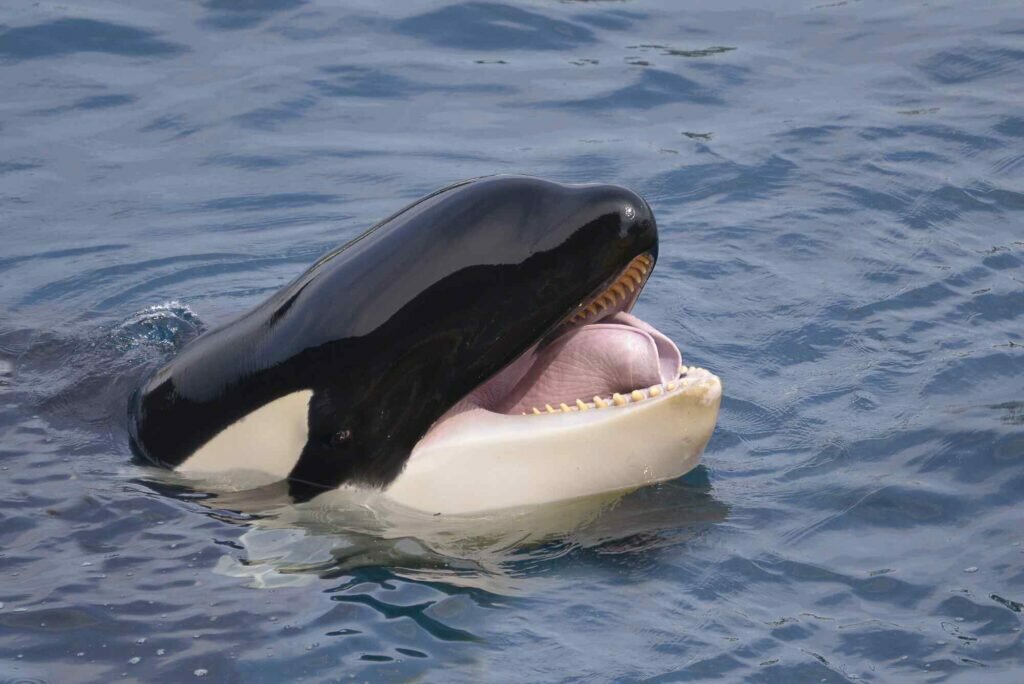
Keiko, a male orca, was undoubtedly the most famous whale to swim in the Icelandic waters and draw people’s attention to the plight of whales in the country.
Captured in East Iceland in the late 1970s, Keiko was bought and sold to different aquariums, where he was trained to perform various stunts for live audiences. Not long after, he bagged a role as Willy in the 1993 film “Free Willy” by Warner Brothers.
Two years later, a foundation was established by the same name with the aim of sending Keiko back to his natural habitat. And in the late 1990s, he flew from the US to the Icelandic waters aboard a US-cargo plane.
The idea was to help him reunite with other killer whales and live freely in the ocean, for which he underwent rigorous training in the Klettsvik Bay (Vestmannaeyjar Islands). Although he left Iceland as a part of a big killer whale group, he showed up in Norway in September 2002, desperate for human contact.
All attempts to help him live freely failed, as he passed away that December at the age of 27 due to pneumonia while swimming alone. Since then, the whale watching industry in Iceland has seen a massive boost, with thousands of people flocking to the country almost every year.
The Beluga Whale Sanctuary
The Beluga Whale Sanctuary of the Westman Islands is part of the Sea Life Trust and was established with the joint support of Merlin Entertainments and the Whale and Dolphin Conservation (WDC). It operates to provide a natural and better habitat to all the belugas under its care and protect the ones in the wild. Plus, it performs various research activities to learn more about these species.
It’s open to the public, and the ticket revenue earned goes towards fulfilling its goals. In hindsight, it aims to pave the way for the protection of more than 3,000 whales and dolphins under care facilities or commercial performance centers. The first inhabitants of the sanctuary were a couple of belugas, who traveled more than 6,000 miles by air and sea from an amusement park in Shanghai.
